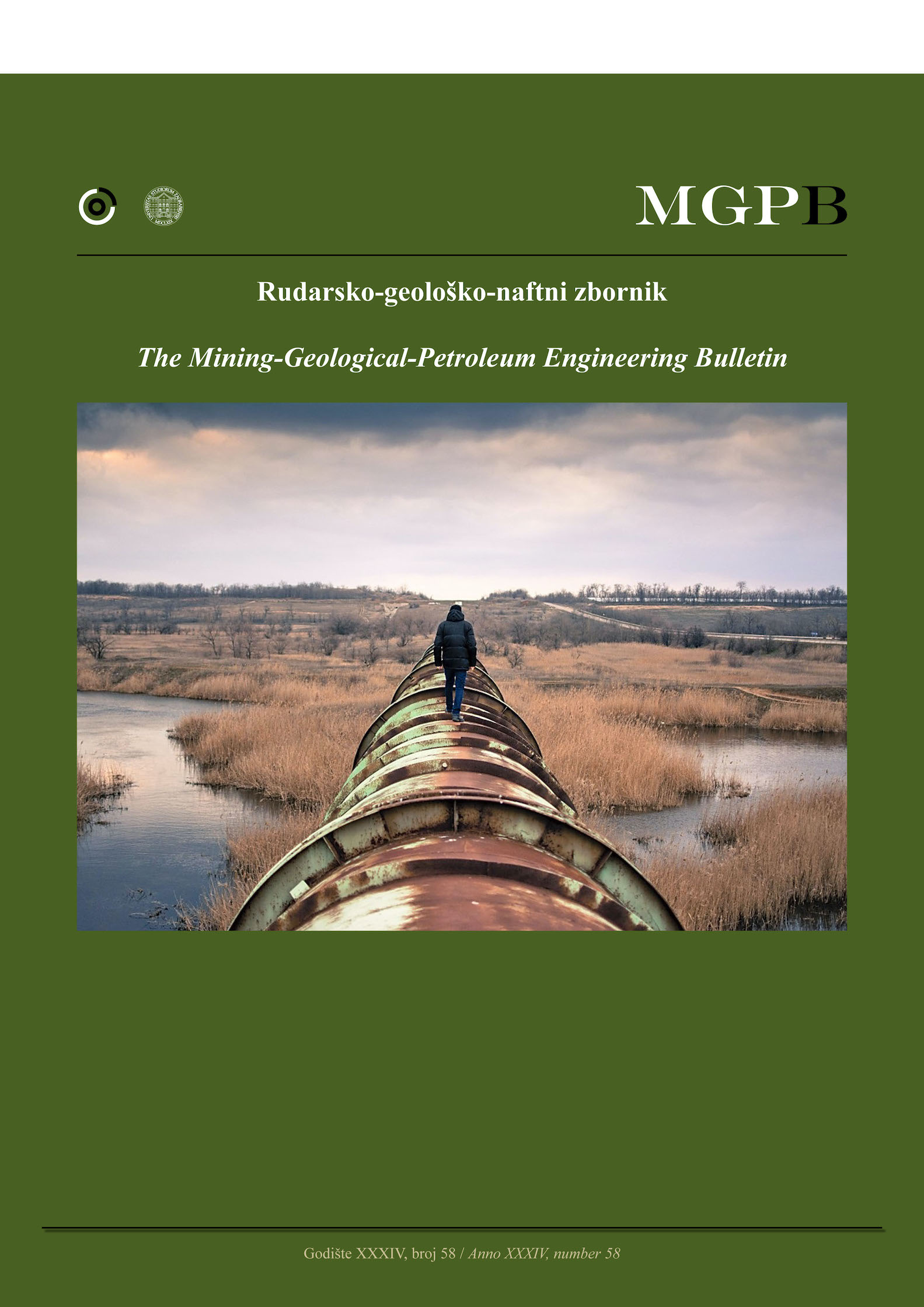Architectural complexities and morphological variations of the sediment waves of Plio-Pleistocene channel levee backslope of the Indus Fan
DOI:
https://doi.org/10.17794/rgn.2022.2.4Keywords:
sediment waves, channel levee backslope, younger sections, turbidity currents deformation featuresAbstract
The architecture of the turbidity current sediment waves exhibits intricate morphologies and patterns on the Indus Fan channel levee backslope. The sediment waves are present on the channel levee of Plio-Pleistocene age and are absent in the deeper sections of the study area. The architecture of channel levee backslope on the Indus Fan is poorly understood. We used seismic interpretation techniques and modelling by utilizing high-resolution seismic data to approach this problem. The morphological variations in wavelength, crest dimensions and potential wave formation patterns suggest the autogenic and allogenic processes associated with wave development. Wavelengths reach up to 1473 m with an average of 486.84 m and the height of the levee ranges between 10 m and 60 m (average 30 m). The angle of the channel levee and dimension of the sediment wave here are independent of each other. Low angle levees have accommodated high dimension sediment waves and vice versa at multiple points downslope. Characteristically, the waves have formed on the outer levee (usually left) of the channels marked by steep margins suggesting that flow overspill caused the development of the waves. Generally, the younger sediment waves followed the patterns of older sediment waves, but the varying trends are often observed in the study area. The patterns of the sediment waves towards the younger sections of the levee indicate the modified and varying architectural style of growth. Sediment waves are generated by downslope turbidity currents. However, the deformation features have also possibly triggered the development of sediment waves.
Downloads
Published
How to Cite
Issue
Section
License
Copyright (c) 2021 authors and journal

This work is licensed under a Creative Commons Attribution 4.0 International License.
Creative Commons-BY
Authors who publish with this journal agree to the following terms:
In agreeing this form, you certify that:
- You read the ethical codex of the RGN zbornik available at journal web.
- You submitted work is your original work, and has not previously been published and does not include any form of plagiarism.
- You own copyright in the submitted work, and are therefore permitted to assign the licence to publish to RGN zbornik.
- Your submitted work contains no violation of any existing copyright or other third party right or any material of an obscene, libellous or otherwise unlawful nature.
- You have obtained permission for and acknowledged the source of any illustrations, diagrams or other material included in the work of which you are not the copyright owner.
- You have taken due care to ensure the accuracy of the work, and that, to the best of your knowledge, there are no false statements made within it.
- All co-authors of this submitted work are aware of, and in agreement with, the terms of this licence and that the submitted manuscript has been approved by these authors.
Publication licence
You retain copyright in your submitted work, according to journal license policy (CC-BY). By signing this form you agree that RGN zbornik may publish it under the publication licence. In summary the licence allows the following:
Anyone is free:
- To copy, distribute, display, and perform the work.
- To make derivative works.
Under the following conditions:
- The original author must always be given credit.
- The work may not be used for commercial purposes.
- If the work is altered, transformed, or built upon, the resulting work may only be distributed under a licence identical to this one.
Exceptions to the licence
In addition to publishing the work printed under the above licence, RGN zbornik will also enable the work to be visible online.
The journal editorial can change the licence rules anytime but it cannot retroactively restrict author(s) rights.


